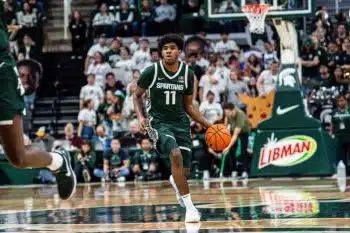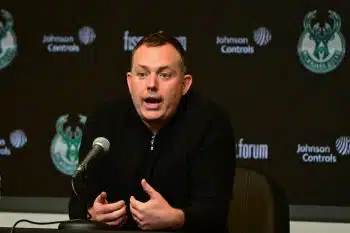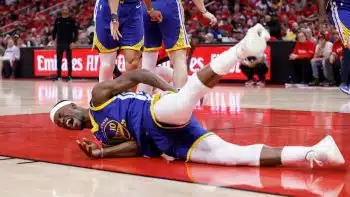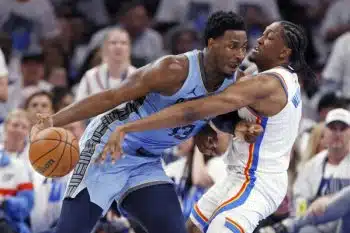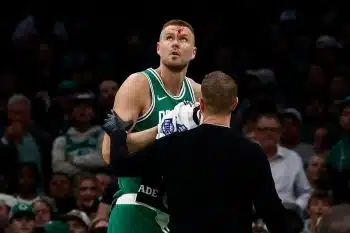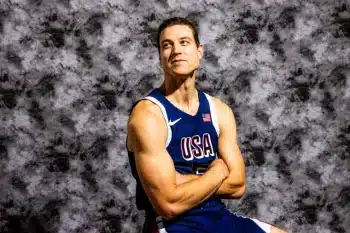NBA
Designated Extensions and Other Changes in CBA
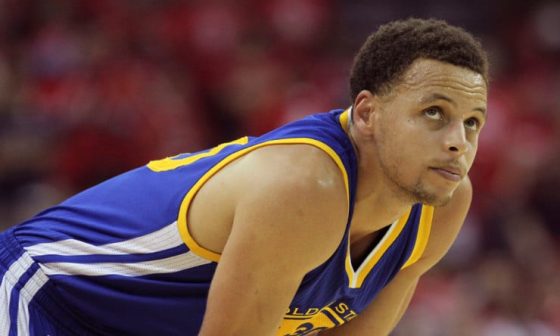
On Wednesday, the NBA and NBPA agreed to a new labor deal, to be formalized and ratified by January 13.
Content You May Like
- Best NBA Betting Sites – Discover our list of the best sites to bet on NBA games.
- Best NBA Futures Bets – In-depth guide about NBA futures bets.
- Best Offshore Betting Sites – List of offshore betting sites with the best offers.
- Best Online Gambling Sites – We reviewed the best gambling sites to gamble online.
- MyBookie Promo Codes – List ot MyBookie promo codes to MyBookie bonuses.
- Bovada Promo Codes – List of Bovada promo codes to claim Bovada bonuses.
Basketball Insiders obtained a copy of the term sheet and detailed a number of rule adjustments (Understanding Terms of NBA, NBPA’s Agreement).
One area of significant change in the new Collective Bargaining Agreement (CBA) revolves around veteran extensions.
A player on a contract of three or four years in length will now be eligible to sign an extension after the second anniversary of signing their current deal. The existing rules only permit extensions after the third anniversary of a four-year deal.
Allowable extensions will increase to five years from four. The maximum amount in the first year will be raised to 120 percent of either the salary in the final season of the original deal (up from 107.5 percent) or the estimated league average.
The new deal will also include “designated player veteran extensions,” which will apply to players entering their eighth or ninth season with their original franchise (or if the player was traded to their existing team at some point during their first four years in the NBA).
To be eligible, a player needs to be named to any of the three All-NBA teams or as Defensive Player of the Year in either the season preceding the extension or two of the three prior seasons. It will also apply to the league’s Most Valuable Player in any of the three seasons before the extension.
One player who will qualify this summer is Stephen Curry of the Golden State Warriors.
This unique extension can only be signed during the offseason (starting in July) and only two players can be inked to designated player extensions per team. The salary in the first year will pay between 30 percent and 35 percent of the salary cap.
Such a player will not be trade eligible for a full year upon signing.
There is also language in the deal to grandfather in players who might qualify who signed long-term extensions during the 2016-17 season, like Giannis Antetokounmpo of the Milwaukee Bucks.
The designated player extension for rookie-scale extensions will drop the All-Star starter qualification; instead matching the designated veteran extension’s award metrics.
Teams will now be permitted to have two players on their roster on designated rookie-scale extensions.
In general, the deadline for rookie-scale extensions will be moved up from October 31 to one day before the start of the regular season.
Under the new deal, players still on rookie-scale contracts will receive bumps in pay – 15 percent for 2017-18, 30 percent for 2018-19 and 45 percent for 2019-20. While teams will be responsible for paying the additional salary, they will be reimbursed by the NBA and the players’ salary cap figure will not be impacted.
Trade rules also appear to be undergoing significant change in regards to non-guaranteed salary. Teams often covet players on non/partially-guaranteed contracts as trade assets they can acquire and then waive, as a tool to shed unwanted salary.
Now, players signed to deals under the new agreement will have just their guaranteed amounts count toward salary matching.
For instance, Arron Afflalo’s 2017-18 salary ($12.5 million) with the Sacramento Kings is $1.5 million guaranteed. If a player were to sign a similar deal after this season, they would only count as $1.5 million of outgoing salary in trade. To an incoming team, Afflalo’s salary would be the full $12.5 million, complicating salary matching.
Rosters will increase from a minimum of 13 players to 14 but the number of empty roster charges (at $815,615 for the 2017-18 season) will remain at 12.
If a team does not reach the minimum salary, they are obligated to compensate the players on their roster for the shortfall. The new agreement clarifies that the additional payment cannot push a players’ total salary over their individual maximum.
The fines for suspensions will be reduced to 1/145th of a players’ base compensation, although it will remain at 1/110th for suspensions of 20 games or more.
Penalties for using a steroid, performance-enhancing drug will be 25 games for a first-time offender and 55 for a second.
The NBA has also agreed to return half of the penalties for 24 flopping fines to the impacted players. In turn, the NBPA will drop its pending “Unfair Labor Practice charge.” Moving forward, both sides will collectively bargain over potential penalties for on-court conduct rules.
While the moratorium will end on July 6, the NBA will determine the salary cap for each coming season before the moratorium begins – on July 1.
The playoff pool for the coming season will be $20 million with future increases tied to the growth of basketball-related income.
Other areas in the deal include health insurance and an increased pension for retired players, prohibited activities (now including fireworks, firearms, jet skiing, hoverboards, trampoline jumping, etc.) and a comprehensive policy for domestic violence incidents.
Until an actual Collective Bargaining Agreement (CBA) is executed, the details are subject to change.
Basketball Insiders will project each team’s cap room for the 2017-18 season and detail the concept of two-way contracts and other minutiae of the agreement in future articles.
All bets are off
If you are looking to bet, make sure to read our guide about NBA betting. You can also use one of the numerous US online sportsbooks or one of the offshore betting sites or bet on the go with the best mobile sports betting apps.
